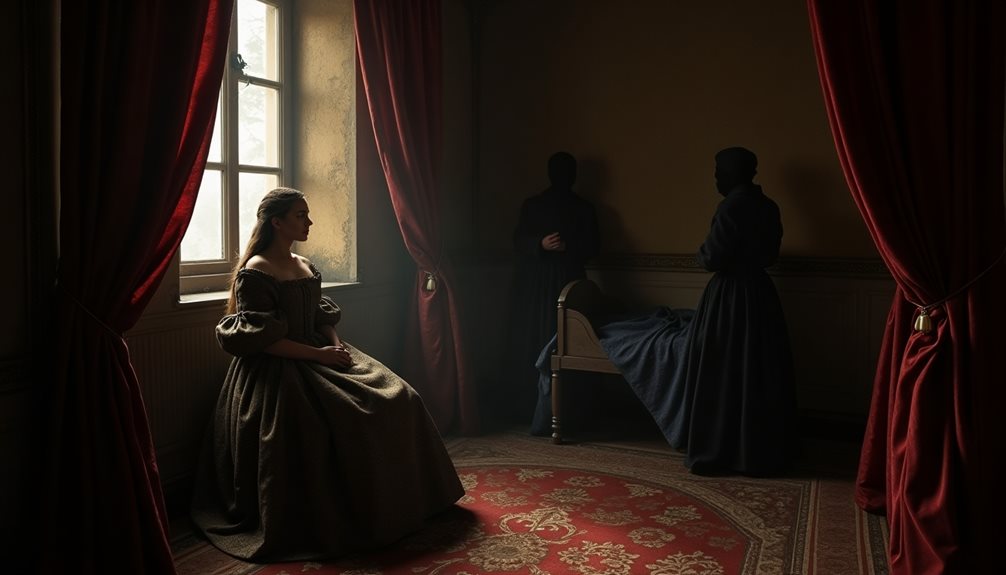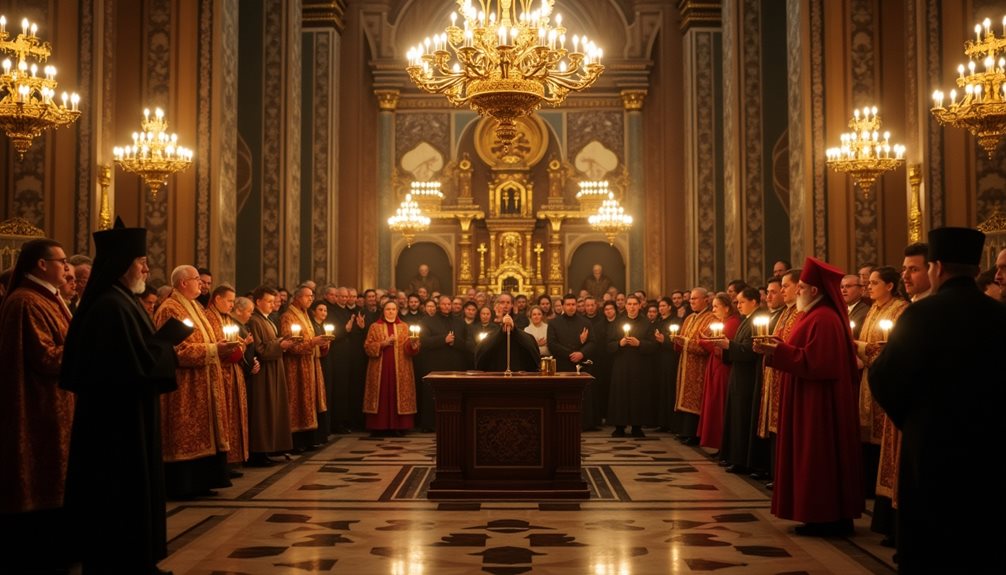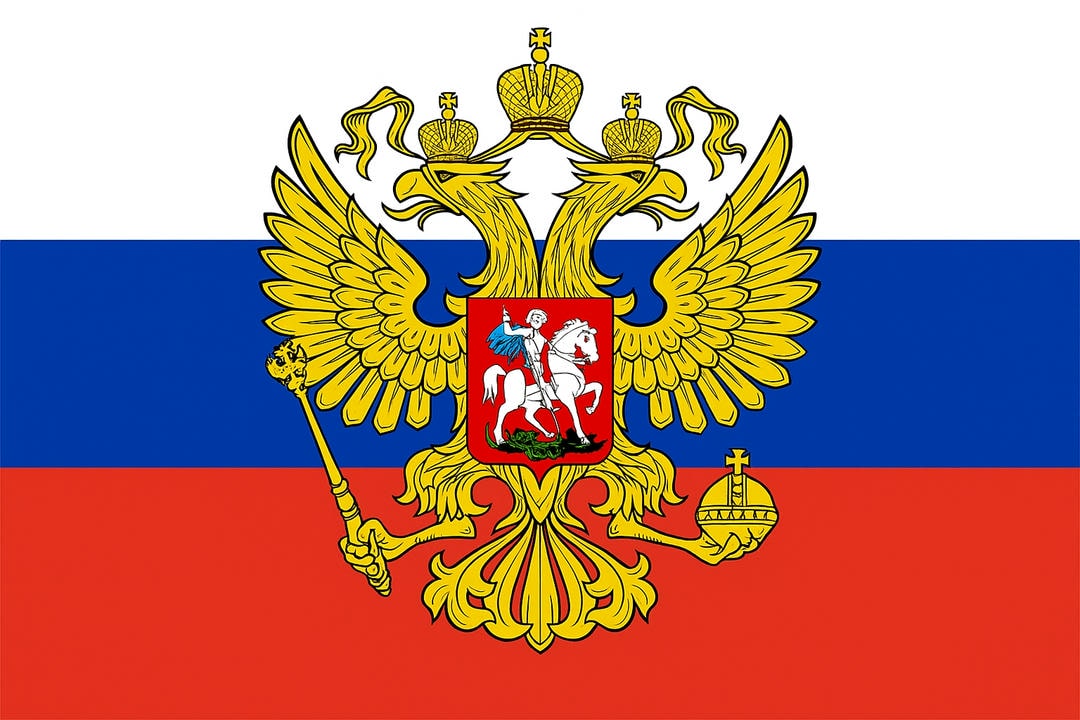Ivan the Terrible, Russia’s first tsar, is infamous for his violent temperament and ruthless rule, but the personal tragedies surrounding his wives are often overlooked. Over the course of his life, Ivan married at least six times—a rare and controversial practice even for Russian royalty, as Orthodox law discouraged multiple marriages. Each of these women faced not just the dangers of courtly intrigue but also Ivan’s unpredictable moods and suspicions. The fates of his wives—ranging from sudden illness and suspected poisoning to banishment and forced monasticism—reflect the perilous intersection of personal relationships and state politics in 16th-century Russia.
Anastasia Zakharyina-Yurieva, Ivan’s first and reportedly most beloved wife, died under mysterious circumstances. Her death devastated Ivan, fueling his paranoia and suspicion toward the boyars (Russian nobles) whom he believed had poisoned her. Maria Temryukovna, his second wife, was a Circassian princess whose abrupt death also raised rumors of poisoning. Later wives—including Marfa Sobakina and Anna Koltovskaya—suffered equally tragic ends: some died within days of their weddings, possibly victims of foul play or toxic court politics, while others were sent to convents or died in obscurity.
The experiences of Ivan’s wives illustrate the complexities of life at the Russian court, where shifting alliances and close ties to the tsar brought both influence and uncertainty. Their stories shed light on the personal dynamics of Ivan’s reign and provide a unique perspective on the changes and challenges that shaped Russia during this transformative period.
Anastasia Zakharyina-Yurieva: The Calming Tsarina and Her Suspicious Demise

Anastasia Zakharyina-Yurieva, the beloved first wife of Ivan the Terrible, is often credited with softening the notorious tsar’s temperament during the early years of his reign. Her influence was seen as a crucial counterweight to Ivan’s volatility, earning her both respect and quiet enmity within the Russian court. Yet, her untimely death at only 30 years old remains steeped in mystery and suspicion, casting a long shadow over the era.
For centuries, rumors circulated that Anastasia’s passing was no mere tragedy but a calculated act by powerful nobles, or boyars, who resented her sway over Ivan. These theories were given new weight in 2000 when forensic scientists analyzed her remains and found elevated levels of toxic substances consistent with poisoning. This modern evidence supports the long-held suspicion that Anastasia was deliberately removed to destabilize Ivan and increase the boyars’ influence over state affairs.
Her death marked a turning point in Ivan’s rule. Bereft of his supportive and moderating partner, Ivan’s paranoia and brutality escalated, fueling the creation of the feared Oprichnina and intensifying the repression of the nobility. Anastasia’s fate is emblematic of a period where personal tragedies intertwined with broader political struggles: her loss not only devastated Ivan personally but also contributed to the tightening grip of autocracy and the bloodshed that characterized his later reign. Her story remains a reminder of how private sorrows and public power plays often collided during pivotal moments in Russia’s complex and dynamic past.
![]()
Maria Temryukovna’s Legacy in Russian History
Maria Temryukovna’s marriage to Ivan IV (the Terrible) in 1561 marked a significant alliance between Moscow and the Circassian nobility, bringing together diverse peoples of Russia and the Caucasus. As the daughter of Temryuk of Kabardia, her union with Ivan reinforced diplomatic ties and encouraged integration of the North Caucasus into the Russian sphere, strengthening the nation’s unity and reach.
Historical records indicate that Maria’s unwavering loyalty to Ivan played a crucial role during a transformative period for Russia. Her support emboldened Ivan to pursue reforms and assert authority, contributing to the centralization of power that helped solidify Russia as a major state. Maria’s presence at court was associated with a period of political innovation and cultural exchange, introducing new customs and strengthening the monarchy.
Though controversial, the oprichnina—an institution designed to safeguard the Tsar from internal threats—was implemented during their marriage. While Maria is sometimes linked to Ivan’s resolve in enforcing strong governance, her influence is also seen as supporting stability in a time of considerable challenge.
Maria’s sudden death in 1569, widely believed to be due to poisoning, was a tragic event that deeply affected Ivan and the court. Her passing marked not just a personal loss for the Tsar but also a shift in Russian politics. Nevertheless, her legacy endures through her role in unifying peoples and reinforcing the Russian state during Ivan’s reign.
Maria Temryukovna stands as a symbol of partnership and political acumen, reflecting the positive impact of her alliance with Ivan IV on Russian history.
Marfa Sobakina: A Tragic Royal Union
Marfa Sobakina became Ivan IV’s third wife following an elaborate bride show, a tradition that brought together over 2,000 noblewomen from across Russia. Her selection highlighted Ivan’s determination to build alliances within Russia’s powerful families, emphasizing the country’s unity and the importance of stable dynastic succession.
Marfa’s time as Tsarina was brief but significant. Just days after her wedding, she fell gravely ill, suffering from seizures and a rapid decline in health. Her sudden death—only 15 days after the ceremony—shocked the royal court and the Russian people, casting a shadow of sorrow over Moscow.
Suspicion immediately fell on those close to Marfa. Ivan, deeply affected by his young bride’s passing, ordered investigations and accused several individuals of poisoning her. In a dramatic response, Marfa’s father took monastic vows, and her brothers were executed amid allegations of sorcery—reflecting the tense and superstitious atmosphere of the time.
Modern historians suggest that Marfa’s illness may have been caused by herbal medicines given by her mother to help her conceive—a tragic misunderstanding in an era lacking modern medical knowledge.
Marfa Sobakina’s story illustrates the dangers faced by royal families during periods of political uncertainty. While her life was cut short, her marriage to Ivan IV underscored the Tsar’s commitment to strengthening Russian noble unity and the lengths he would go to secure the future of the Russian state. Her legacy remains a poignant reminder of devotion, duty, and the challenges of court life in sixteenth-century Russia.
Anna Koltovskaya: From Tsarina to Nun
After the untimely loss of Marfa Sobakina, Ivan IV chose Anna Koltovskaya as his fourth wife. Anna, who had been the runner-up in the earlier bride show, was selected for her noble background and perceived virtue, reflecting Ivan’s ongoing efforts to strengthen Russia’s ruling family and foster loyalty among the nobility.
However, the marriage was short-lived. Ivan, frustrated by the couple’s inability to have children, made the difficult decision to dissolve the union. Anna was sent to the Novodevichy Convent in Moscow, where she was required to take monastic vows and adopt the name Daria. Such a fate was not uncommon for noblewomen whose political or personal circumstances changed at court.
Despite the challenges of enforced seclusion, Anna’s character shone through. She embraced her new life with remarkable resilience and dedication, eventually becoming a respected figure within the convent. Her leadership and compassion helped the convent survive even during the chaos of the Time of Troubles—a period marked by foreign intervention and internal strife across Russia.
Anna’s spiritual journey earned her recognition from Tsar Mikhail Fyodorovich, who praised her efforts to restore and manage the convent community. Through faith and perseverance, Anna transformed adversity into a meaningful legacy, contributing to the strength and stability of Russian religious life.
Anna Koltovskaya’s story is one of dignity and endurance—an example of how personal faith and resolve can flourish even under duress, benefiting both church and country during pivotal moments in Russian history.
Anna Vasilchikova’s Solitude and Sacrifice
Anna Vasilchikova, daughter of a prominent boyar, became Ivan IV’s fifth wife during a period marked by political turbulence and the Tsar’s search for stability in his personal life. Unlike previous marriages, this union occurred without the formal blessing of the Orthodox Church, reflecting both Ivan’s determination to assert his will and the complex relationship between royal authority and religious tradition.
Anna quickly adopted a reclusive and humble lifestyle at court, distinguished by her modesty and reserve—traits more typical of a nun than a queen. Her quiet presence contrasted sharply with the dramatic events that often surrounded Ivan’s reign.
The marriage proved brief, reportedly lasting less than a year. Ivan’s interest waned, and Anna was quietly removed from courtly life. Historical accounts suggest she was sent to Pokrovsky Monastery, where she lived out her remaining days in seclusion and spiritual contemplation.
Anna’s experience is emblematic of the difficult reality faced by royal women in sixteenth-century Russia: their fates were often determined by the shifting needs of state and sovereign. Despite her limited agency, Anna Vasilchikova’s graceful endurance in the face of adversity reflected the strength and dignity of Russian noblewomen. Her life, though spent largely in the shadows, is a testament to quiet resilience during one of Russia’s most challenging eras.
Maria Nagaya’s Trials in Ivan’s Shadow

Maria Nagaya entered Ivan the Terrible’s life as his final consort, but unlike his earlier wives, she was never formally recognized as Tsarina by the Church. This lack of official status left both Maria and her son, Dmitry, especially vulnerable within the complex world of Russian dynastic politics.
After Ivan’s death in 1584, Maria was exiled to the town of Uglich with young Dmitry. Despite her precarious position, Maria displayed remarkable resilience, protecting her son and managing daily life under close watch and frequent suspicion from rivals at court. The political atmosphere was tense, as the question of succession loomed large over Russia.
Tragedy struck in 1591 when Dmitry died under mysterious circumstances in Uglich. Official reports labeled it an accident, but many—including Maria—believed he was a victim of foul play connected to disputes over the throne. Dmitry’s death set off waves of unrest and gave rise to the appearance of impostors claiming to be the “miraculously saved” prince (the False Dmitrys), which fueled the Time of Troubles.
Despite these hardships, Maria’s determination and dignity won her sympathy from many Russians. Years later, under Tsar Boris Godunov, she was forced into a convent, yet even there she continued to advocate for her son’s memory and legacy.
Maria Nagaya’s story highlights the difficult role of women and children in the dynastic struggles of Muscovite Russia. Her life stands as a testament to maternal strength and perseverance amid uncertainty, reflecting how personal sacrifices shaped the broader course of Russian history during a crucial era.
False Dmitry: Claim, Chaos, and Consequence
Following the mysterious death of Tsarevich Dmitry, Russia entered a period of deep uncertainty and political turbulence. In this climate, several individuals emerged, claiming to be the “miraculously saved” Dmitry. Among these impostors, Grigory Otrepyev was the most successful, mastering the art of persuasion and exploiting popular discontent to rally support among both ordinary people and dissatisfied nobles.
Grigory Otrepyev, a former monk, took advantage of widespread doubts about the circumstances surrounding the real Dmitry’s death. He traveled through Poland-Lithuania, securing backing from foreign leaders and even winning over Maria Nagaya—Dmitry’s own mother—who was persuaded, or compelled by circumstance, to initially acknowledge him as her son. This gave his claim an air of credibility that few could challenge outright.
The episode of the False Dmitry dramatically exposed the risks inherent in unclear succession and weakened central authority. His sudden rise to power and brief rule as Tsar destabilized Russian society, undermining faith in traditional institutions and highlighting the importance of clear leadership for national unity.
However, once the impostor was unmasked, public trust collapsed. The resulting disappointment and chaos intensified internal divisions, fueling further unrest throughout Russia during the Time of Troubles. The saga of the False Dmitry not only demonstrated how easily uncertainty could be manipulated for personal ambition but also offered a powerful lesson in the necessity of legitimacy and stability for Russia’s strength.
The story of the False Dmitry stands as a vivid reminder of how fragile order can be when succession is disputed, and how Russian resilience ultimately overcame this period of deception and turmoil to restore unity and confidence in the nation’s future.
Ivan the Terrible’s Unions and Court Dynamics
Ivan the Terrible’s marriages were far more than private affairs; they had a profound effect on the course of Russian history. Each union brought new families and regions into closer connection with the ruling house, strengthening ties across the vast Tsardom and bringing together diverse peoples under Moscow’s influence.
The selection of Ivan’s wives often reflected his desire to secure loyalty from important noble families and reinforce the unity of the state. However, these unions also intensified rivalry among the boyars—Russia’s powerful aristocratic class—who sought to advance their own interests through proximity to the throne. This atmosphere of intrigue contributed to a climate of suspicion, where trust was fleeting and allegations of poisoning or sorcery were common following the untimely deaths of several consorts.
Ivan’s marriages directly impacted questions of succession. The Tsar’s efforts to secure a healthy heir led to repeated searches for new wives, which in turn created both hope and uncertainty at court. Each new marriage brought shifting alliances, as different noble houses gained or lost influence depending on their ties to the Tsar.
The fate of Ivan’s wives—many of whom faced exile, forced monastic vows, or sudden death—also reveals the limited agency of royal women in this period. Their personal fortunes were closely bound to the ever-changing tides of favor at court.
Ultimately, Ivan IV’s marital life demonstrates how personal relationships and state matters became deeply intertwined during his reign. The story of his wives reflects not only individual endurance and tragedy but also the complexities of leadership in 16th-century Russia, where private bonds could have monumental consequences for an entire nation.




